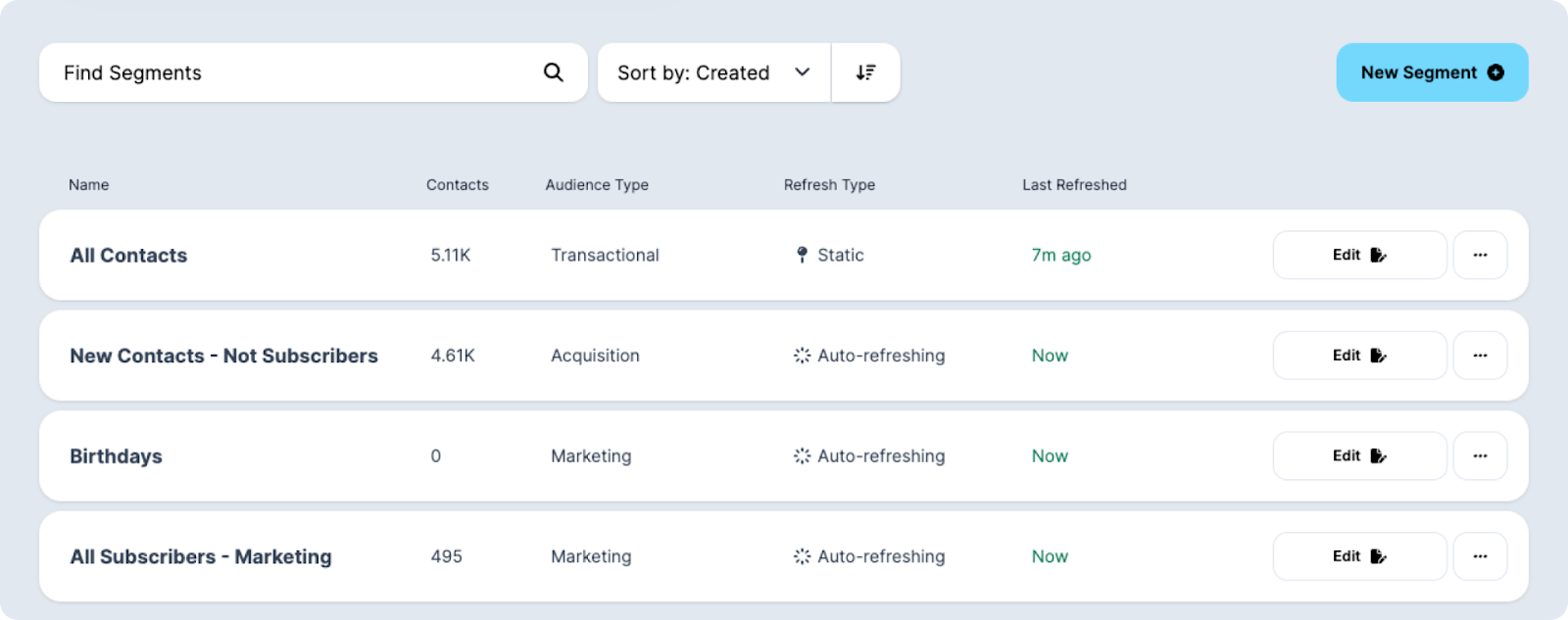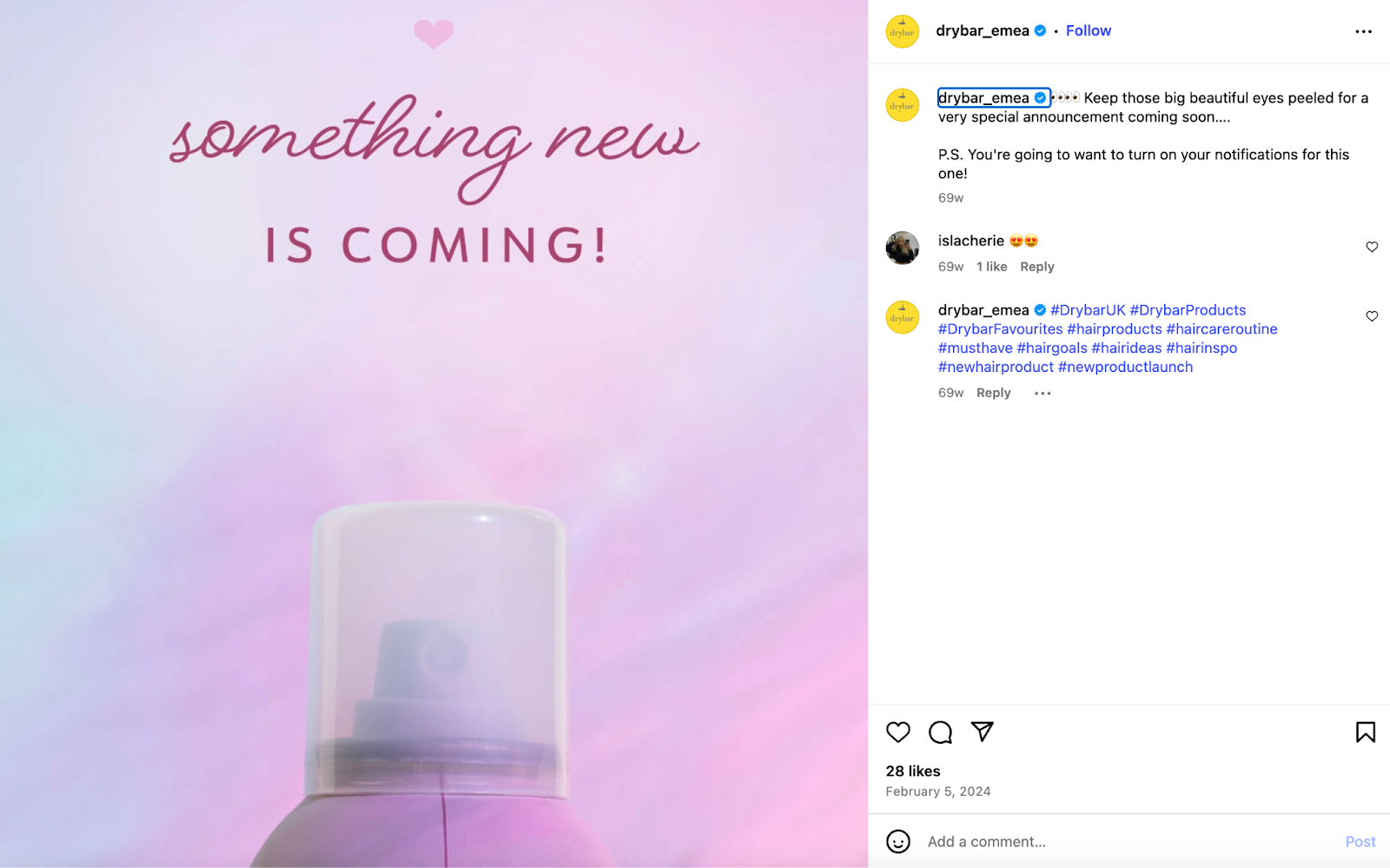In today’s competitive marketplace, your existing customers represent the most valuable—and often overlooked—growth opportunity. Existing customers already know your brand, so targeted outreach yields higher response rates at a fraction of the cost of new acquisition. Plus, nurturing this audience strengthens loyalty and drives better retention. Plus, loyalty rewards, referral incentives, and tailored offers create fresh engagement opportunities and boost repeat sales.
Use Direct Marketing to its Maximum Potential
Direct marketing delivers personalized messages and offers directly to individuals, often through channels like email, SMS, or direct mail. It’s especially effective with existing customers because you already have valuable data about their preferences and purchase history, allowing for highly relevant outreach.
For example, if a customer bought spiral notebooks and pencils in late August, they’re likely a parent preparing for back-to-school season and may be interested in discounts on other kid-related items; meanwhile, someone who purchased high-end stationery might respond better to promotions for luxury pens or leather-bound journals. Direct marketing enables you to send each customer offers that match their unique interests, providing deals that speak to their specific needs rather than treating everyone the same.
Direct marketing has a more narrowed, focused reach. However, given your ability to tailor marketing content—and the fact that they have a preexisting relationship with your brand—each outreach is more likely to result in some sort of measurable success.
Choosing the Right Combination of Mediums—Text, Direct Mail, Email and More
Text marketing for existing customers
- Pros of text messaging – Text messaging offers immediate delivery and high open rates, making it ideal for time-sensitive promotions, flash sales, or important reminders. Messages are short and direct, which increases the likelihood of engagement. Another advantage is that texts are typically read within minutes, allowing for rapid customer response and feedback.
- Cons of text messaging – Just because someone is a customer doesn’t mean you can automatically text them, as this would be in violation of regulations like the Telephone Consumer Protection Act (TCPA). Instead, you have to obtain explicit consent from recipients before sending marketing texts. Another potential roadblock? Texts lack the full design capabilities of email, though multimedia messaging service (MMS for short) does enable inclusion of graphics, GIFs, audio files, and more.
Email marketing for existing customers
- Pros of email - Email allows for visually rich content, making it well-suited for newsletters and other non-time-sensitive communications. Like text marketing, it is cost-effective and easy to automate.
- Cons of email - Emails can easily get lost in crowded inboxes or be filtered into spam folders, reducing visibility. Open and click-through rates are generally lower than text messages, and those who do open your marketing emails are less likely to do so upon receipt.
Direct mail marketing for existing customers
- Pros of direct mail - Direct mail stands out because it’s tangible and can feel more personal or memorable than digital messages. It’s less likely to be ignored compared to emails, especially when creatively designed. Physical mail can also reach customers who are less active online.
- Cons of direct mail - It’s more expensive and time-consuming to produce and deliver than digital channels. Results can be harder to track, and there’s a risk that mail will be discarded as junk without being read.
Cold calling existing customers
- Pros of cold calling - Cold calling allows for real-time, two-way communication, making it possible to answer questions and address objections immediately. It can be highly effective for building relationships and closing complex sales.
- Cons of cold calling - There’s an elephant in the room—the only thing people dislike more than talking on the phone is talking on the phone with telemarketers. Today, unsolicited calls are widely considered intrusive, so these direct marketing efforts can actually damage existing customer relationships rather than strengthen them. Additionally, there are legal restrictions and “do not call” lists that must be taken into account.
These are only representative of some of the direct marketing options at your disposal to connect with existing customers. To further explore these strategies and how to combine them, read Is Email Marketing Still Effective? 6 Alternatives for Comparison.
Target Messaging Based on Known Customer Information
Numerous case studies have shown that making direct marketing messages more relevant leads to higher engagement and conversion rates. Generally, these personalization strategies fall into three main categories, outlined below. With a bit of creativity, you can find many ways to customize your brand’s content for each customer.
Localize tactics, messaging, and sources
Adjusting your marketing efforts to reflect local culture, events, and preferences can significantly boost engagement among existing customers. When your messaging feels rooted in the community, it becomes more relevant and relatable.
For example, a yarn shop could send an SMS promoting yarn in the local sports team’s colors and invite customers to “knit the perfect team beanie.” Another example: if a segment of your existing customers lives in a region about to receive a major snowstorm, you can automatically text them that you still have rock salt in stock and encourage them to buy it before the roads become too dangerous to drive on.
Localization doesn’t have to stop with the content itself. Voxie data proves that marketing texts sent to existing customers using localized phone numbers get a greater response than those sent from unknown area codes. What’s more, you can modify texts’ timing based on region-specific data.
Employ marketing list segmentation
Segmenting your existing customer list allows you to group individuals based on shared characteristics such as purchase history, location, or engagement level. This enables you to send more targeted and meaningful messages, ensuring that each customer receives offers and information that are most relevant to them. Effective segmentation can lead to higher open rates, increased conversions, and a better overall customer experience.

For instance, let’s say you run a shoe store that will be having storewide Black Friday promotional discounts; existing customers who frequently buy high heels can receive imagery of the hottest pumps and stilettos, while sneaker-lovers can see pictures of the latest athletic shoes and limited-edition releases.
To learn more, read Effectively Segment SMS Lists - Tactics for Greater Engagement.

Personalize the content based on shared information and customer behavior
Personalized direct marketing uses customer data—like purchase history, preferences, or information they provide—to send messages that feel relevant to each individual, rather than generic. In short, it allows you to use known information about your existing customers to the fullest!
For example, you might text: ‘Hey [Customer Name], it looks like Buddy hasn’t had his favorite Canine Chicken Chews in a while. Has he been a good boy lately? Treat him to his favorite snack—[link]!’”

Create a Loyalty Program
Loyalty programs are an exceptional marketing tool, offering a powerful strategy for both retaining existing customers and increasing their lifetime value.
Firstly, they incentivize repeat purchases by rewarding customers for their continued patronage, making them feel valued and appreciated. This sense of recognition strengthens the customer-brand relationship and encourages them to choose your business over competitors (especially when buying from you grants extra points).
Secondly, loyalty programs provide invaluable data on customer preferences and buying habits. This information allows businesses to personalize offers and communications, leading to more successful marketing campaigns and a tailored customer experience.
We encourage you to explore how your direct competitors setup and promote their loyalty programs. However, to serve as inspiration, we point you to Panera’s reward program. While they do many things right, the strategies that jump out the most to us include:
- Offering two different types of rewards programs to better serve individual needs
- An immediate reward for signing up (aka, a free pastry and delivery)
- Panera sends regular marketing texts to customers about new opportunities in order to stay top-of-mind
- Granting loyalty members early access to new menu items not only provides a cost-effective way to reward program participants, but could provide helpful preliminary data into consumer interests on the whole

Host Educational Events and Content
A major leap for any brand is to go from a supplier to a thought leader, in order to build deeper brand loyalty and establish authority within their industry. Companies that have done this include Apple, Michaels, Williams Sonoma, Home Depot, REI, and Sephora. While this transition is no doubt due to a myriad of strategies and large marketing budgets, they have one tactic they all share—doing free educational training for their customers.
Events can be the ultimate marketing tool for upselling existing customers because they offer an immersive and interactive experience that provides genuine value.

By hosting workshops or product demonstrations, businesses can directly educate customers, deepen their understanding of offerings, and simultaneously underscore their marketing message. After all, someone is less likely to buy a lip liner or chasing hammer if they’re not sure how to use it!
Moreover, these events help foster a sense of community, allowing customers to connect with the company and with each other. Such bonds to staff and the brand overall can be the determining factor when an existing customer needs to choose between you and a competitor.
Refine Your Social Media Efforts
Social media strategy is truly deserving of its own article—nay, an entire book. However, any article about marketing to existing customers that failed to mention social media would be sorely lacking. After all, your followers won’t be people who are unfamiliar with your brand, but rather your most passionate fanbase.
To get your creative juices flowing, here are twenty simple yet effective ways to use social media to market to your existing customers:
- Let franchisees operate their own social media channels in coordination with corporate teams, made possible through the right franchise marketing software. This allows localized voices to shine forth, helping nurture the relationships customers have with specific storefronts and staff.
- Use social media to hype upcoming product releases in order to increase buzz. Will you be granting SMS marketing subscribers early access to a new product? Have your existing customers salivating by releasing visual teasers through social media.
- Publish behind-the-scenes content. Give customers an insider’s look at your process by posting photos and short videos of product development or design processes. This can help deepen your customers’ appreciation for your offering.
- Host contests as a way to have 2-way engagement with customers and get free UGC. Perhaps host a monthly contest in which existing customers are asked to show your products “in the wild.” All they’d have to do is take a picture or video, send it via SMS, and voila! As a bonus, you’ll have plenty of new content to feed future social marketing.
Consider Digital Remarketing Efforts For Existing Customers
Digital remarketing, sometimes called retargeting, aims to re-engage visitors or customers who have already interacted with your brand by serving them customized ads or messages across digital channels. Using data from cookies, email lists, or your CRM, you can segment past buyers or site visitors and deliver timely, relevant content—such as special offers, product recommendations, or loyalty incentives—to an audience that has already demonstrated interest or loyalty.
For example, upload an anonymized list of your existing customers into Facebook or Instagram Ads as a Custom Audience, then serve carousel or collection ads highlighting new arrivals, loyalty-tier upgrades, or limited-edition releases. Because these customers already know and like your brand, they’re more likely to engage than audiences unfamiliar with you, maximizing the ROI of your marketing spend.
Build Hype Around New Product Releases
Changing up your inventory or offering spices up your marketing for numerous reasons, starting with the fact that it stops existing customers from growing bored of your products or menu items. New product announcements also give you an excuse to reach out so you stay top of mind. Ideas on how to generate interest in soon-to-be-released merchandise includes:
- Teaser campaigns on social media, not unlike this example from Dry Bar
- Early-access alerts in which you give loyalty members or SMS subscribers a private pre-launch window
- Host a live-stream unboxing or product demo on Instagram, Facebook, or YouTube.
- Send samples to industry influencers and have them share honest first impressions.

Regularly Refresh Your Window Displays
If you run a restaurant or retail store, chances are that your customers are neighbors who regularly pass by. So treat your window display like a billboard that actively beckons them in.
Regularly refreshing your window display will give your existing customers a reason to pause when passing by and help you stay fresh in their minds. Experiment with bold signage, seasonal props, and thematic vignettes so your storefront always offers something new to discover. Plus, a little humor goes a long way to staying memorable!
Get to Know Your Existing Customer Base to the Fullest
There’s no excuse not to know your core clients to the fullest—all the information you need is readily available if you’re able to unlock and organize it. In order to effectively market to existing customers, ensure you have well-defined, accurate insights into:
- What kinds of deals or offers motivate them
- What external factors influence their purchasing decisions
- What their preferred way to consume media and communicate with brands is
- Their typical purchase frequency and value
- Their biggest pain points that your product or service addresses
If you have gaps in the marketing personas of existing customers, use a combination of the following:
- Customer surveys - This could come in many forms, such as a texted request-for-feedback 48 hours after a purchase, or even a one-time survey in which you inquire about what kinds of merchandise customers want to see next. SMS is an ideal channel for surveys due to its impressive open rates compared to other mediums. The inherent casualness of text messages also subtly communicates the ease and brevity of the survey, encouraging higher completion rates.
- Social listening - Monitor social media conversations for mentions of your brand, industry, and competitors. This can reveal organic feedback, common sentiments, and emerging trends that influence your customers’ perceptions and needs.
- Analysis of past buying patterns of different subgroups - Dive into your sales data to identify trends within specific customer segments. Look for common product pairings, seasonal purchasing habits, and responses to past promotions to understand what drives repeat business within different groups.
- A/B testing of marketing messaging - Experiment with different versions of your marketing copy, visuals, and calls to action to see which resonate with your audience. This data-driven approach helps you optimize your messaging for maximum impact and engagement.
Non-Marketing Ideas for Increasing Sales Among Existing Customers
While marketing is one of the primary levers at your disposal to boost sales from existing customers, it’s not your only tool. Other ways you can increase someone’s lifetime value includes:
- Simplify the reordering process - Make it incredibly easy for customers to buy from you again, perhaps with one-click reorder options.
- Offer subscription or automatically recurring purchases - Taking the above idea one step further, enable customers to automate deliveries or set up recurring service plans.
- Be creative with what you choose to upsell - Think beyond direct product upgrades and consider complementary services, premium support, or exclusive add-ons.
- Follow-up post-purchase to confirm customer satisfaction - A quick check-in can address any potential issues, and open the door for future sales.
- Always be considering fresh opportunities to provide new value to customers - Regularly assess what additional problems your customers might have that you can solve.
- Evaluate your customer service to strengthen retention - Excellent support can turn a one-time buyer into a loyal, recurring customer.
- Develop strategic partnerships - Collaborate with complementary businesses to offer bundled solutions or cross-promotions.
Strengthen Relationships With Existing Customers Using Voxie’s SMS Solutions
Voxie stands out as the only SMS platform specifically designed for franchises, offering unique capabilities to deepen customer relationships. Importantly, the tool allows franchise companies to safeguard their brand while empowering franchisees to actively market to their existing customers.
Marketing-minded franchisees can leverage the platform to send texts using approved templates, with all outgoing messages vetted through comprehensive approval flows and baked-in TCPA compliance. Simultaneously, Voxie enables corporate entities to send targeted, personalized messages from localized numbers, providing crucial support and engagement for all franchisees, including those less marketing-minded.
Request a demo to learn how Voxie can help you market to existing customers with greater results, schedule a demo with a member of our team
